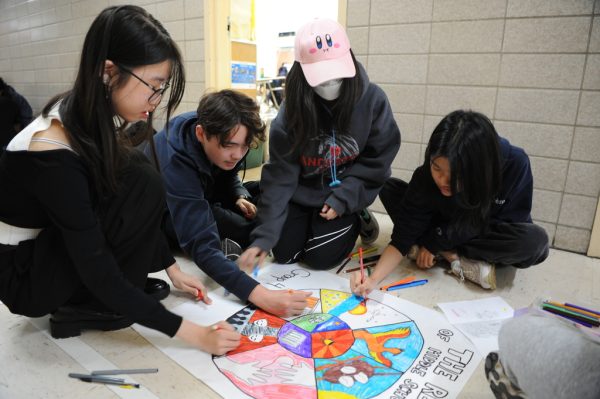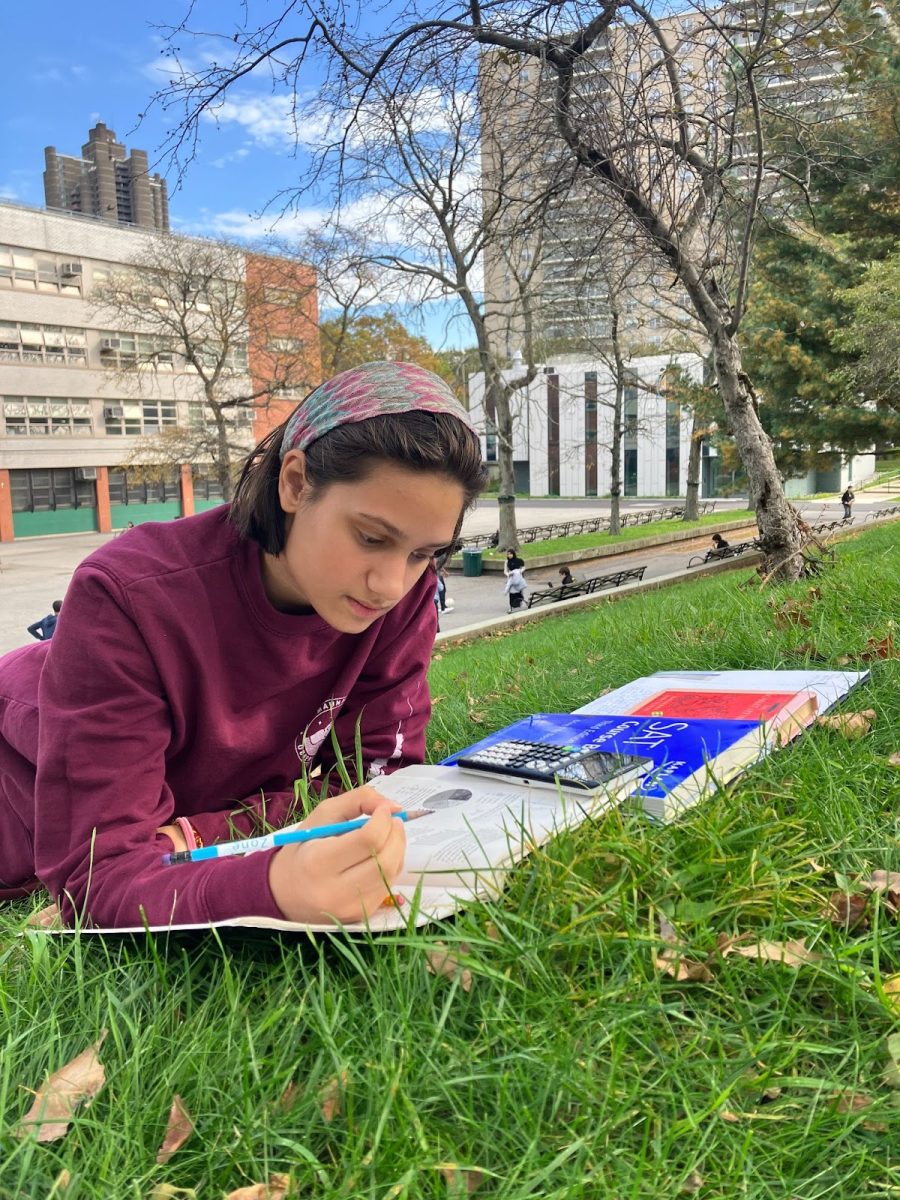For high school students around the United States, junior year carries the additional weight of preparing college applications. This means visiting – virtually or in person – prospective universities, committing to extracurricular activities, and preparing for standardized tests. For the class of 2025, however, this final task is changing. A new digitized test format and the increasing number of colleges going test-optional are all transforming the way standardized tests are viewed and used.
Stemming from the Coronavirus outbreak in 2019, colleges across the United States have minimized the influence of the SAT in their admissions process. Due to the pandemic, it was harder for students to physically go out and test in outside schools. In-person tutoring was at times impossible and financial burdens exasperated by the Coronavirus outbreak made paying for test preparation even more difficult than usual.
As a result, most universities – for instance, Yale, Cornell, and Northwestern – are extending their test-optional admissions through the fall of 2024. Many are currently deliberating whether to continue this decision to future years.
Columbia University and the University of Chicago have already determined to permanently remove standardized tests from their lists of required documents for admissions. Other test-optional colleges include Stanford, Johns Hopkins, Brown, and Dartmouth.
In keeping with the ever-popular holistic admissions systems, many colleges and universities are putting more weight on essays, transcripts, extracurriculars, and letters of recommendation, and less on standardized test scores. In such holistic reviews, admissions committees consider numerous factors when analyzing a prospective student, including background, school, and academic excellence. Instead of zeroing in on one thing, colleges will consider every angle of a student’s qualities and application.
Prospective applicants are still encouraged to send in their SAT scores if they believe that the results accurately describe them as a student. Yale University urges those applying to consider providing their scores, even if they are below the average accepted ranges.
Making the SAT optional increases a student’s ability to personalize their admissions. Applicants choose which teachers to obtain letters of recommendation from, what topics in which to focus their essays, and what extracurricular activities to highlight. It only follows that students should be able to decide if a standardized test should be attached to their application.
The current transformation to the SAT does not stop with test-optional policies. Starting in 2024, all tests will be taken online, eliminating the on-paper version of the exam.
With the digitalization of the SAT, an unprecedented addition of anxiety is infused into the test-taking process. “Online SATs add an additional layer of complexity and stress to an already pressuring exam,” said Alexandra Davidescu ’25. The non-conventional format has prompted many Bronx Science juniors to cram as many attempts at the SAT as possible in the months before 2024. “I’ve had to study more in order to take the SAT while a paper version is still offered,” said Zachary Meryn ’25.
The complete and dramatic change from paper and pencil to keyboard and screen is a nervous trigger for students not used to online testing. “I am pretty annoyed that the SAT will be fully digitized, with no in-person option available after this year,” said Maya Jowata ’25. The total abandonment of a non-digital test has forced many students to start studying earlier and to sign up for each monthly test before 2024. Jowata along with numerous other Bronx Science juniors registered for the October, November, and December 2023 SATs, refusing to go into the digital new year without multiple opportunities to take the on-paper test.
Others, however, believe that an online SAT version will allot students more time per question, increasing scores and equity in the exam. In a New York Times interview, College Board Chief Executive Officer, David Coleman, equates the digital version with the conclusion of time being a precious commodity on test day. “It’s time we stop confusing quick with smart,” said Mr. Coleman. The 2024 SAT will be shorter and, “on average, 97 percent of students complete all questions in a section with up to seven minutes to spare on each section.”
The controversy over standardized tests has been the driving force behind the debate over whether the Sat should be optional or mandatory and on-paper or digital.
Supporters of the SAT have stressed the uniformity of the test, as it provides an unbiased baseline for determining a student’s performance. Factors such as GPAs and transcripts can often be arbitrary as the same classes can have different difficulty levels depending on which high school the applicant is from. While some colleges keep these discrepancies in mind, differences in difficulty between tests, assignments, and the grading framework of different teachers can unfairly help or hinder a student’s grade.
Jowata said, “Standardized tests make a fair attempt to reflect overall student intellect and performance in a way that other methods don’t.” A uniform test eliminates discrepancies engendered by differing levels of difficulty in schools or teachers. Every student has the same type of test, in theory, leveling the playing field.
However, although the structure and content of the test are constant, the students themselves and their outside situations differ. Access to tutoring and repeated practice time are often deciding factors that heavily influence scores. The SAT itself can be retaken as many times as the student likes; the only drawback is the testing fee. Accessibility is a massive issue regarding standardized testing, widening the wealth gaps in college admissions.
Research has shown that the SAT additionally heightens racial inequities. One article analyzed racial disparities in the SAT math section, finding, “Of those scoring above 700 [the highest is 800], 43% are Asian and 45% are white, compared to 6% Hispanic or Latino and 1% Black.”
Further, standardized tests validate specific aspects of a student’s intelligence while not taking into account those who possess different skills. Although natural test takers might excel at the formulaic structure of the SAT, they may struggle in projects that involve writing, long-term time management, collaboration, and networking. Vise-versa, students who prosper in group work projects may falter in the time strenuous environment of a test day. “This is a pretty unfair disadvantage,” said Jowata. “Especially considering that teamwork and good writing skills might be more important in the work environment than test-taking.”

The SAT and most standardized tests are limited to testing English and math. Although important and broad topics, they do not extend to many other subjects of interest. Students who wish to major in history, science, or world languages are less able to illuminate their different skills in areas of expertise that transcend English, grammar, and mathematics.
As a result of this argument against the SAT, the College Board attempted to adapt their standardized tests to expand and cover a wider range of subjects. The reading sections, for example, have been diversified through the addition of historical and scientific articles on top of literature and comparative excerpts.
These efforts, however, leave much to be desired. “Standardized tests do a good job at quantifying a student’s abilities to broadly succeed in subjects such as Mathematics or English,” said Davidescu. “However, they are not a fair prediction of student intellect and performance, since they cannot measure their success and intellectual capabilities in other areas.”
Further, a student’s high school career is forged through four years of study and projects. With standardized tests, said Meryn, “Some students may have had a bad day and are unfairly punished for a small lapse. Grades are a better predictor of student ability since students are more routinely tested throughout the year.” The bottom line is that standardized tests are only one of many imperfect ways to measure student performance. Although useful, they should be taken with a grain of salt. The SAT is a piece in the puzzle of student achievement, with as many disadvantages as advantages. Test-optional policies make this distinction a reality.
Further, the optional SAT policy has been proven to widen and reshape the applicant pool. Students who hesitated in applying to certain schools because of their SAT scores are now more incentivized to apply to schools that do not require standardized tests. While the SAT has been proven to widen racial and economic disparities, a test-optional policy would minimize its effect. In an interview with EducationWeek, Vern Granger, the board chair of the National Association for College Admission Counseling, said, “We’re seeing a more diverse applicant pool—an increase in African American students who apply, and Hispanic/Latinx students.”
Worcester Polytechnic Institute found that following the implementation of a test-optional policy, the number of minority applications increased by 30 percent. While the average SAT scores of admitted students decreased, the high school GPA of incoming college first year students increased from the previous year’s 3.66 to a record high for the institute, of 3.76.
While many high school students still plan on taking the SAT, the minimized importance of the standardized test in their applications has taken some of the pressure off this otherwise vital step. “I am still personally taking the SAT, though not with the same level of preparation and panic I would have had if it were still required and had as much importance placed on it,” said Jowata.
Digital or not, the SAT is no longer a deciding factor to make or break an application. To evaluate a student’s entire high school career, colleges are putting increased emphasis on factors that go beyond studying for standardized tests, focusing more on the students themselves. A test-optional policy gives an applicant more choice in their admissions, personalizing them to show the true image of a prospective student.
“Standardized tests do a good job at quantifying a student’s abilities to broadly succeed in subjects such as Mathematics or English,” said Alexandra Davidescu ’25. “However, they are not a fair prediction of student intellect and performance, since they cannot measure their success and intellectual capabilities in

